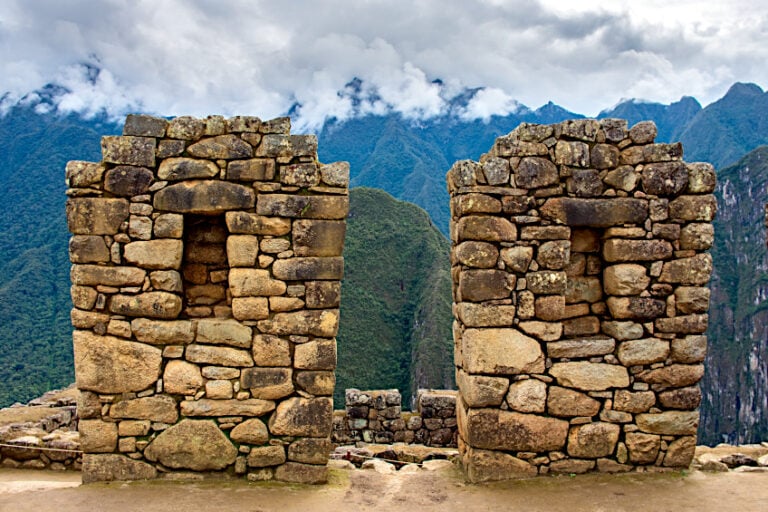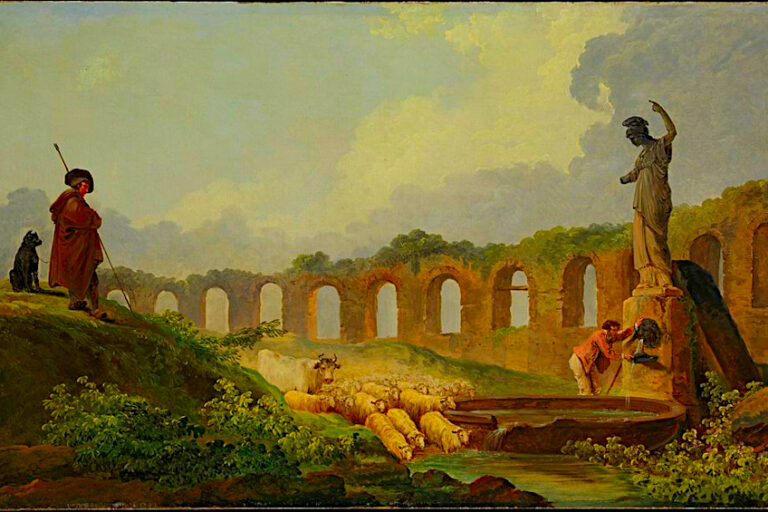Paleolithic Art – Exploring the History of Cave Paintings
What does “Paleolithic” mean? What is Paleolithic art? and why is it important? Prehistory can seem like a dense and banal topic at first but some of the most significant art forms have arisen from periods such as the Paleolithic era that will have you in awe of the amazing work of our early human ancestors. The Paleolithic period was a time in prehistory that marked the beginning of many creative endeavors, including early painting, sculpture, and drawing. In this article, we will take you on a journey into Paleolithic culture and explore the history of cave paintings as well as some of the most famous Paleolithic artworks.
Contents
- 1 The Paleolithic Era
- 2 Paleolithic Art
- 2.1 Famous Paleolithic Cave Paintings From Around the World
- 2.1.1 Polychrome Bison at Altamira (35,559 – 15,204 BCE)
- 2.1.2 The Panel of the Horses at Chauvet Cave (33,000 – 30,000 BCE)
- 2.1.3 Kangaroo Painting in Kimberley (17,500 – 17,100 BCE)
- 2.1.4 The Great Hall of the Bulls at Lascaux (16,000 – 14,000 BCE)
- 2.1.5 The Maros-Pangkep Karst Paintings (c. 43,900 BCE)
- 2.2 Abstract Drawing in the Paleolithic: Blombos Cave
- 2.3 Paleolithic Sculpture: Venus Figurines
- 2.4 Art Mobilier
- 2.1 Famous Paleolithic Cave Paintings From Around the World
- 3 Other Significant Paleolithic Cave Art Sites
- 4 Frequently Asked Questions
The Paleolithic Era
What does “Paleolithic” mean? The majority of you may be familiar with the term “prehistory”, which refers to the time before humans were able to capture or record human history and the events of the world around us. The Paleolithic period, as with any other geological epoch, is not defined by solid time frames since humans faced development in art and culture at different rates, locations, and periods in prehistory. The Paleolithic period is understood as the Old Stone Age in archaeology and is estimated to have commenced around 2.5 million years ago and slowed down or transitioned to the next era around 10,000 BCE.
This period is defined by the use of stone tools as a form of technology in human history and coincides with the birth of culture.
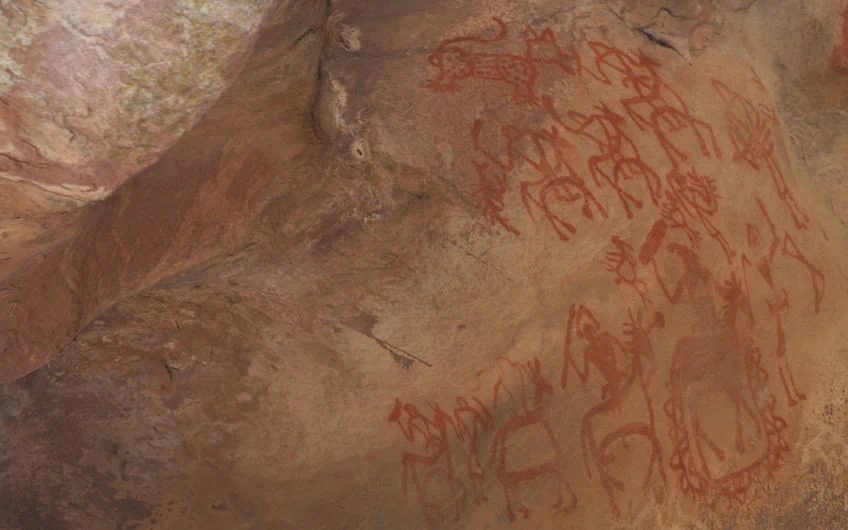 Rock cave paintings pre historic near Bhopal Madhya Pradesh India (10,000 BCE); Nagarjun Kandukuru, CC BY 2.0, via Wikimedia Commons
Rock cave paintings pre historic near Bhopal Madhya Pradesh India (10,000 BCE); Nagarjun Kandukuru, CC BY 2.0, via Wikimedia Commons
This period is further understood in three parts: the Lower Paleolithic, Middle Paleolithic, and Upper Paleolithic periods. It is important not to dwell too much on the specific timing of beginning and end dates in the Paleolithic era since many developments overlapped with each other. The most important area of study for the development of art is the Upper Paleolithic era, which was defined by incredible developments in Europe and the emergence of anatomically modern humans (AMH).
The art forms of the Upper Paleolithic era display complexity in culture and tool-making, which inspired many region-specific traditions in art across sculpture, painting, and instrument-making.
A Paleolithic Art Definition
When considering a Paleolithic art definition, it is useful to understand that Paleolithic art refers to one of the oldest forms of art in human history and spans multiple continents, including Europe, Southeast Asia, Australia, Sub-Saharan Africa, the Americas, Near East Africa, and North Africa. Discoveries are always being made so keeping an open mind timewise will prove valuable.
Paleolithic art is defined by the presence of figurative art, which first appeared between 40,000 and 35,000 years ago. Other non-figurative markings found in Paleolithic cave paintings comprise hand stencils and decorative geometric shapes, which were found to be as old as 64,000 years. The emergence of figurative art from the Paleolithic period is incredibly significant since it alludes to the birth of behavioral modernity. The subject of debate reaches its peak when it comes to identifying art made by the Neanderthal species versus the Homo sapiens or modern humans during the Middle Paleolithic era.
Modernity in art is often thought of in a historical sense yet prehistory’s version of modernity is more connected to behavior that is considered “more refined”. Art as a practice is considered a modern behavior.
A Hunter-Gatherer Lifestyle
Paleolithic culture and lifestyle were heavily driven by the hunter-gatherer economy, which meant that humans relied on the act of hunting wildlife and gathering resources to support their everyday living needs to survive. The hunter-gatherer lifestyle was crucial to the development of technology as humans slowly adapted to the need to better protect and equip themselves for hunting. Societal development over the Paleolithic period saw the advancement of shelters, cave art, jewelry production, and ritualistic behavior.
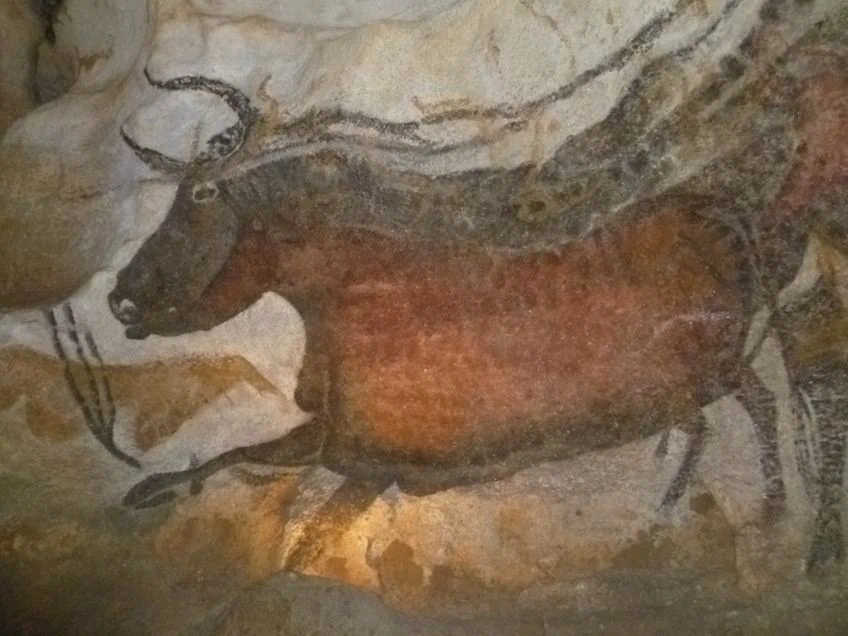 Lascaux Caves (16,000 – 14,000 BCE); JoJan, CC BY 4.0, via Wikimedia Commons
Lascaux Caves (16,000 – 14,000 BCE); JoJan, CC BY 4.0, via Wikimedia Commons
The first evidence of hunter-gatherers was found in Africa where several different groups of humans thrived at different points in time. In Ethiopia, stone tools dating to around 2.6 million years ago were discovered, indicating signs of a hunter-gatherer society. The food that hunter-gatherers consumed varies depending on the environment and region.
Some of the animals on the menu of these early societies include the woolly rhinoceros, giant elk, the megaloceros, fish, and small game.
The transition to the Upper Paleolithic era saw fewer humans settling in caves since the population outgrew the number of available caves by then. Humans adapted by forming other dwelling types such as shelters constructed out of wood, rocks, and straw. What remains of these “modern” types of shelters are few and rare, but not nonexistent. Scientists discovered a tent-like structure in Siberia crafted from mammoth bones supporting the roof and believed to house multiple families.
A Brief History of Cave Paintings
The history of cave paintings is important to review since it provides the framework from which one can begin to interpret the history of art in a prehistoric sense. The oldest cave drawings and cave paintings were discovered on the Asian island of Indonesia, which also demonstrated similar artistic traditions with cave paintings in Western and Eastern Eurasia. The spread of this practice is believed to have moved with the spread of people under the coastal migration movement.
Early parietal artists employed painting techniques led by hands, including clay modeling and finger tracing to create hand stencils and engravings in caves, usually executed in monochrome (one color) or polychrome (three to four colors).
Cave paintings are understood to serve as abstract markings that communicate the lifestyle, culture, and observations of humans from the past. Some common motifs found in cave paintings include animal imagery of horses, bison, deer, aurochs, human figures, naturalistic images, silhouettes, and sometimes therianthropic figures. Ochre was a dominant medium for Paleolithic artists along with other pigments such as manganese oxide, charcoal, animal fat, blood, vegetable pigments, hematite, and variable shades of ochre.
Cave paintings also became more complex with artists choosing to create Paleolithic drawings using incision techniques with rock or bone and then painting over these incisions with pigments to enhance the visual aesthetic of the image. Patterns such as dots, circles, dashes, lines, and organic shapes also feature in some of the most famous surviving cave art examples. The earliest cave paintings are believed to be more than 40,000 years old, which is an astounding amount of time considering the narrow lens from which we are accustomed to learning about art history.
Paleolithic Art
The Paleolithic era resulted in some of the most organic and defining processes, which announced the birth of art for humanity driven by artistic behavior. Below, we will examine some of the most famous artworks from the Paleolithic period that showcase the different types of art as envisioned through cave painting, sculpture, drawing, and archaeological artifacts.
 Panneau Des Lions (14,000 – 10,000 BCE); Claude Valette, CC BY-SA 4.0, via Wikimedia Commons
Panneau Des Lions (14,000 – 10,000 BCE); Claude Valette, CC BY-SA 4.0, via Wikimedia Commons
Famous Paleolithic Cave Paintings From Around the World
Some of the most well-known Paleolithic artworks originate from Europe and Asia with stunning imagery painted and engraved on cave walls. Upper Paleolithic art forms in Europe span jewelry, sculpture, rock painting, cave painting, drawing, and carving. Asia is home to highly-significant artistic finds while Australia houses many magnificent rock shelter paintings. The most popular sites to discover the wonders of Paleolithic painting include the cave sites at Lascaux and Chauvet in France and the Alta Mira cave complex in Spain.
Below, we will dive into some of the most famous cave paintings in Paleolithic history.
Polychrome Bison at Altamira (35,559 – 15,204 BCE)
| Date | 35,559 – 15,204 BCE |
| Medium | Yellow, brown, and red ochre on an engraved cave ceiling |
| Dimensions (cm) | 125 – 170 x 200 |
| Where It Is Housed | Santillana del Mar, Cantabria, Spain |
The Cave of Altamira is one of the most famous European sites with spectacular Paleolithic paintings that features an entire ceiling decorated with bison and horse imagery. The cave is found in northern Spain close to Santillana del Mar, Cantabria. The polychrome bison paintings are considered to be the highlight of the cave complex and were executed in yellow, red, and brown shades of ochre painted over engraved images of bison and horses.
This vivid display of early Paleolithic art also contains several figures with black pigment and illustrates the artists’ approach when using color to draw attention to the anatomy of the subjects.
It is believed that humans occupied the cave at its mouth and used mediums like charcoal and ochre to skillfully decorate their homes. These early artists strategically used the contours of the cave to their advantage and added a sense of three-dimensionality to the bison paintings. This famous feature encompasses the essence of Paleolithic painting fueled by Abstraction, Symbolism, and Naturalism. In 1985, the cave of Altamira was declared a UNESCO World Heritage Site.
The Panel of the Horses at Chauvet Cave (33,000 – 30,000 BCE)
| Date | 33,000 – 30,000 BCE |
| Medium | Black pigment/charcoal |
| Dimensions (cm) | 1100 (w) |
| Where It Is Housed | Chauvet-Pont-d’Arc Cave, Ardèche, France |
Located in the South of France, the Chauvet caves contain some of the most famous Paleolithic cave paintings in Europe with Paleolithic drawings dating back to 36,000 years ago. These elaborate paintings are considered the first masterpieces of humanity with its main attraction being the Panel of Horses dating between 33,000 and 30,000 years old.
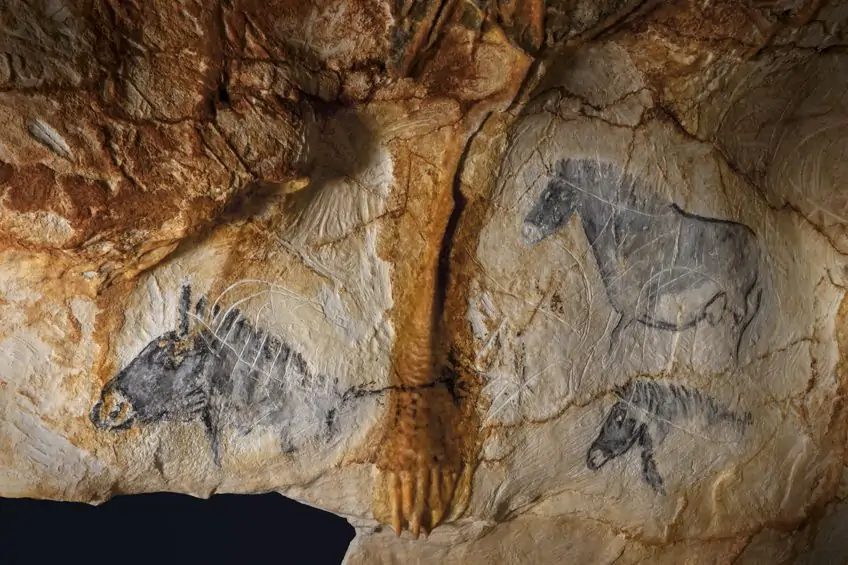 Panneau des chevaux (33,000 – 30,000 BCE); Kleber Rossillon & Région Provence-Alpes-Côte d’Azur / Sources 3D MC, CC BY-SA 4.0, via Wikimedia Commons
Panneau des chevaux (33,000 – 30,000 BCE); Kleber Rossillon & Région Provence-Alpes-Côte d’Azur / Sources 3D MC, CC BY-SA 4.0, via Wikimedia Commons
The Grotte Chauvet is marked as a UNESCO World Heritage Site containing multiple chambers in a cave over 400 meters long. This historical find was discovered in 1994 by three cave enthusiasts who uncovered one of the greatest artistic contributions in history.
The Panel of Horses portrays three horses painted in black pigment with their heads facing inward toward each other.
This little gathering is an example of early humans introducing animals and scenes from everyday life outside the cave into the shelter. The cave was occupied at different points in time by different people. Other incredible paintings in the cave include the figure of a woman’s lower body, which was associated with a Bison figure, and partial handprints in red ochre.
Kangaroo Painting in Kimberley (17,500 – 17,100 BCE)
| Date | c. 17,500 – 17,100 BCE |
| Medium | Ochre pigment on a sandstone rock wall |
| Dimensions (cm) | 200 |
| Where It Is Housed | Kimberley, Australia |
Recognized as Australia’s oldest painting, this two-meter Kangaroo painting was found on a rock shelter in Kimberley, Western Australia. Dating to around 17,500 years old, the painting was believed to be created in a time of immense drought and hardship, yet people still appeared to be making art. The painting was created using an ochre mixture and was covered with a wasp’s nest, which luckily allowed researchers to accurately pinpoint the date of the painting. The linear style of the painting is remarkable in its details on the kangaroo’s fur and researchers theorize that the artist was possibly connected to the trade network during the latter half of the last Ice Age.
The kangaroo is considered culturally significant since it formed part of an initiation rite for young people.
The Great Hall of the Bulls at Lascaux (16,000 – 14,000 BCE)
| Date | 16,000 – 14,000 BCE |
| Medium | Mixed pigments |
| Dimensions (cm) | 550 x 750 x 1700 |
| Where It Is Housed | Lascaux I, Montignac, France |
The Great Hall of the Bulls is one of the most famous Paleolithic paintings alongside the paintings found at the Chauvet cave. Situated in Lascaux near Montignac, this cave is celebrated as the prehistoric Sistine Chapel for its massive collection of over 600 wall paintings. The Great Hall of the Bulls is one of the most iconic paintings from the collection that contains images of animals as witnessed first-hand by early groups of people who observed the migration of many animals.
 Lascaux painting (16,000 – 14,000 BCE); Lascaux, Public domain, via Wikimedia Commons
Lascaux painting (16,000 – 14,000 BCE); Lascaux, Public domain, via Wikimedia Commons
These paintings were executed in a twisted perspective style with strong linear contours. Other artists chose to carve into the soft calcite on the walls while some choose to completely fill in their outlines. The art at Lascaux can be considered a treasure trove of artistic style and an encyclopedia of wildlife between 16,000 and 14,000 years ago. The Great Hall of the Bulls illustrates imagery of horses, bulls, and deer with the bulls dominating the scene and spanning over 5.2 meters in length.
These are the largest depictions of any animal seen throughout the cave.
Paleolithic art may seem like simple representations and observations made by early humans but many scholars have theorized possible reasons why prehistoric Paleolithic cultures chose to paint these images. One theory by Henri Breuil speculates that the meticulous documentation in caves such as the paintings in Lascaux relied on what he thought was “hunting magic” and suggests that by capturing the images of wildlife, the act would grant power over the prey and guarantee a successful hunt. The act of hunting and gathering was at its height so it only makes sense that animals were at the forefront of survival and thus hunting formed a large part of Paleolithic culture.
The Maros-Pangkep Karst Paintings (c. 43,900 BCE)
| Date | c. 43,900 BCE |
| Medium | Red-purple pigment on limestone |
| Dimensions (cm) | 136 x 54 |
| Where It Is Housed | Leang Tedongnge cave, Sulawesi, Indonesia |
The earliest evidence of figurative art in the world is located in southern Sulawesi in Indonesia, which is also home to the oldest parietal painting by a modern human from the Paleolithic era. The Maros-Pangkep Karst paintings are found in a cave complex with an entrance of over 30 meters. In 2014, researchers uncovered a hand stencil painting dating back 35,400 years ago!
The discoveries only got better after the discovery of the Sulawesi warty pig painting in Leang Tedongnge cave, which dated to 45,500 years ago!
Abstract Drawing in the Paleolithic: Blombos Cave
The first abstract Paleolithic drawing was discovered in South Africa on a small piece of ochre within the 73,000-year-old levels of Blombos cave. These abstract markings bore resemblance to a hashtag and indicated that humans from this period were capable of basic design techniques, perhaps as a marker for identification and belonging or decorative. While it can be argued that such abstract shapes and markings may not fall under the category of art that is driven by artistic purpose, it does indicate the capability of modern behavior, which is a key factor in the production of art in the Paleolithic period.
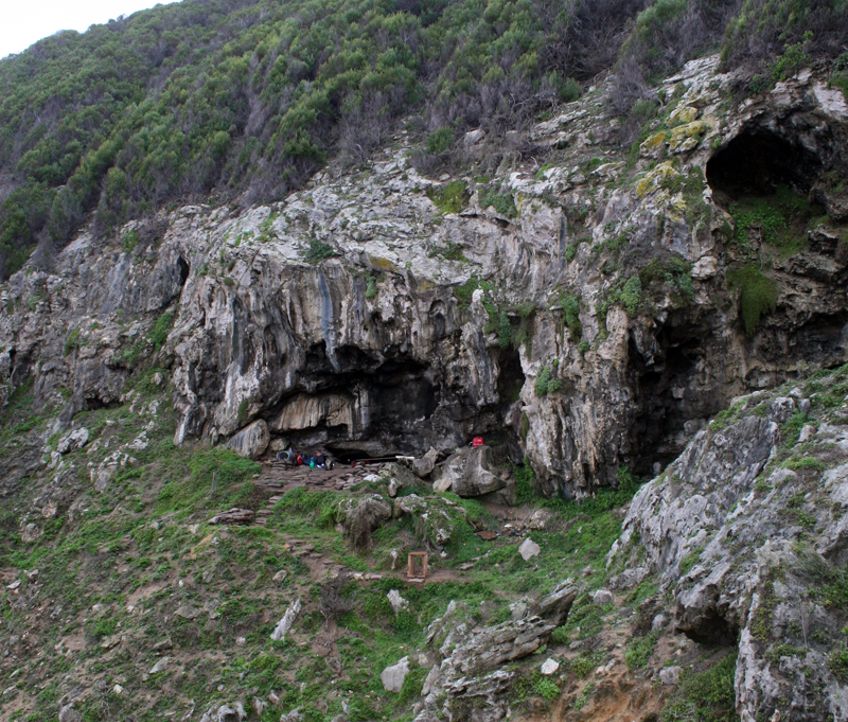 Blombos Cave (71,000 BCE); Vincent Mourre / Inrap, CC BY-SA 3.0, via Wikimedia Commons
Blombos Cave (71,000 BCE); Vincent Mourre / Inrap, CC BY-SA 3.0, via Wikimedia Commons
Paleolithic Sculpture: Venus Figurines
The Paleolithic period also included art forms like sculpture that included objects ranging from beads and utilitarian objects to figurines used for ritual purposes. Caves were not only the art galleries and museums of prehistory but they were primarily the homes and ceremonial chambers of many early humans. Paleolithic culture cannot be spoken about without reference to the Venus figurines.
The Venus figurines refer to a number of stone, ivory, bone, and steatite statuettes of women that were scattered across Asia, Siberia, and Europe.
The emergence of the Venus figurines dates to the Upper Paleolithic period and ranges between four and 25 centimeters tall. These Venus figurines are believed to represent Venus, the goddess of beauty (Roman mythology) and most likely served as tokens of beauty, fertility, and prosperity. The most famous example of a Venus figurine is seen in the Venus of Hohle Fels (c. 40,000 – 30,000 years ago), which was found in 2008 and carved out of a mammoth’s tusk. The body of the figurine is defined by stylistic features such as wide-set thighs, enlarged breasts and torso, and an absence of feet and limbs.
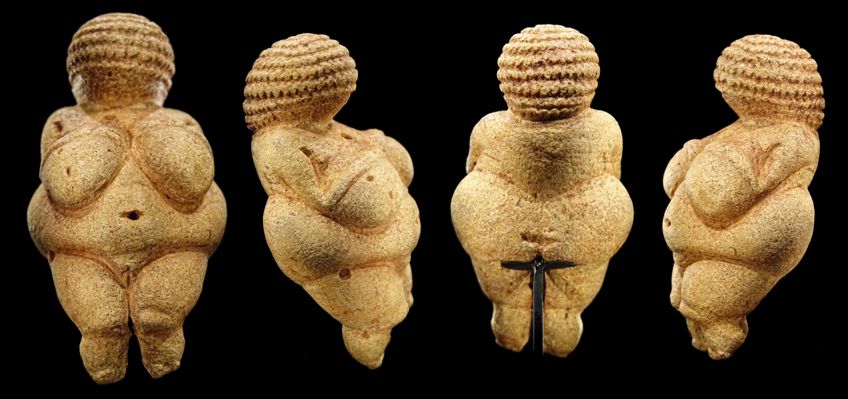 Venus of Willendorf (c 38,000 BCE); Bjørn Christian Tørrissen, CC BY-SA 4.0, via Wikimedia Commons
Venus of Willendorf (c 38,000 BCE); Bjørn Christian Tørrissen, CC BY-SA 4.0, via Wikimedia Commons
Other interpretations of the Venus figurines include the objects symbolizing a mother goddess of abundance, which indicates that certain religious groups and cultures were led by a female-centric religion or system of beliefs. Another theory suggests that the Venus figurines are most likely self-portraits of important women or female artists. Another Venus figurine that was the subject of major debate is the Venus of Tan-Tan from Morocco, which was fashioned from a quartzite rock and dated between 500,000 and 300,000 years ago. The figurine was discovered in 1999 and has become a topic of debate concerning its origin and nature.
A few experts theorize that the figurine originated due to natural geological forces combined with tool-based carving techniques while others argue that the shape of the rock was due to mere erosion and weathering.
Art Mobilier
The term art mobilier refers to art that was able to be transported around and is usually in the form of drawings or paintings on pieces of rocks. This art form, also commonly known as rock art, is featured around the world on all continents and it remains unclear as to the reason why early humans made and transported these artworks around. An example of mobile rock art is the Apollo 11 rock drawings, which feature a vague animal drawing on the surface of two rock slabs. The slab drawing dates to approximately 25,000 years old and was discovered on the floor of a cave in the Huns Mountains, Namibia in 1969.
Both slabs were discovered separately by German archaeologist W. E. Wendt, who coined the name of the cave “Apollo 11” after the well-known historical NASA-led mission to the moon.
Other Significant Paleolithic Cave Art Sites
The most famous sites from around the world, as discussed earlier, provide us with a rich source of information concerning the artistic development and techniques of the Paleolithic era. Below is a list of other significant sites where you can explore additional cave art examples that shed light on the region-specific developments of Paleolithic art.
- Cueva del Castillo, Cantabria, Spain
- Cueva de las Manos, Santa Cruz, Argentina
- Cave of La Pasiega, Puente Viesgo, Cantabria, Spain
- Bhimbetka rock shelters, Amchha Khurd, India
- Cosquer Cave, Calanque de Morgiou, Marseille, France
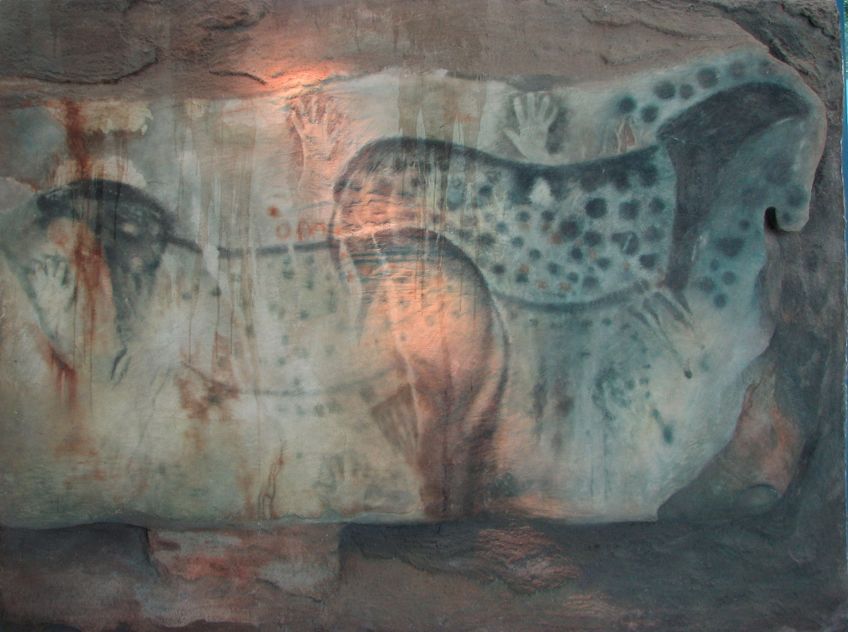 Pech Merle cave leopard (14,000 BCE); HTO, User:Kersti Nebelsiek, Public domain, via Wikimedia Commons
Pech Merle cave leopard (14,000 BCE); HTO, User:Kersti Nebelsiek, Public domain, via Wikimedia Commons
- Magura Cave, Rabisha, Belogradchik, Bulgaria
- Cave of Covalanas, Cantabria, Spain
- La Marche, Lussac-les-Châteaux, Vienne, France
- Cave of Tito Bustillo, Ribadesella, Asturias, Spain
- Cave of La Covaciella, Asturias, Spain
Early Paleolithic artists drew inspiration from their environment and culture to create some of the most elegant and bold paintings of prehistory. The significance of prehistoric painting from the Paleolithic period reminds us of the way that humans have adapted over time and similarly adapted their artistic approaches. Naturalistic forms, waves of ochre, confident incisions on rock surfaces, and a hunter-gatherer-trained eye formed the basic artistic vision of the early Paleolithic artist.
Frequently Asked Questions
What Does Paleolithic Mean?
Paleolithic refers to the period in human history defined as the Old Stone Age and characterized by the development of culture, technology, stone tool-making, and art. The Paleolithic period lies roughly between 3.3 million and 11,650 years ago and is also defined by the emergence of religious and spiritual behavior in humans.
What Mediums Did Paleolithic Artists Use to Make Art?
Paleolithic artists used a variety of mineral pigments, the most dominant being ochre as seen in artworks with various shades of red, brown, and yellow. Other mediums include vegetable pigments, hematite, colored rocks, manganese dioxide, charcoal, and even dirt mixed with blood, water, or animal fat.
What Is the Oldest Paleolithic Painting by a Human?
The oldest Paleolithic painting by a human, or anatomically modern human, is considered to be the wild pig painting dating to 45,500 years ago on Sulawesi Island in Indonesia. The oldest known Paleolithic painting was previously thought to be a hand stencil from the Maltravieso cave in Spain, dating to 64,000 years old until it was found to be created by the Neanderthal species.

I am deeply passionate about history and am constantly fascinated by the rich and complex stories of the past. As the editor-in-chief of learning-history.com, I have the opportunity to share this passion with a wide audience through the creation and distribution of engaging and informative content about historical events, persons, and cultures. Whether it’s through writing articles and blog posts or creating videos or podcasts, I strive to bring the past to life in a way that is both accurate and enjoyable. My expertise in history, combined with my strong writing and communication skills, allows me to effectively communicate complex historical concepts and make them accessible and interesting to a wide range of readers. I am truly grateful for the opportunity to share my love of history with others through my work on learning-history.com.


